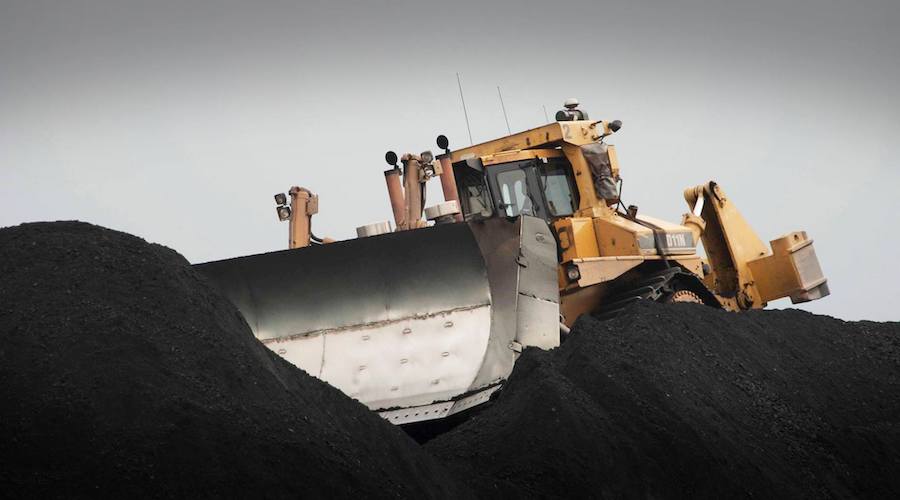
(The opinions expressed here are those of the author, Clyde Russell, a columnist for Reuters.)
India’s coal imports have revived in recent months to close to pre-pandemic levels, but the market shares of the countries supplying cargoes has shifted, mainly as a result of China’s dispute with Australia.
India imported 17.56 million tonnes of thermal and coking coal in January, according to vessel-tracking and port data compiled by Refinitiv.
This was down slightly from December’s 17.74 million tonnes and 18.02 million in October, but a touch above November’s 17.54 million.
Overall, the last four months has shown that India’s appetite for imported coal has returned, after taking a blow in the middle of last year as the government locked down the South Asian nation as part of efforts to combat the spread of the novel coronavirus.
While Australia has been gaining market share in India, the loser has been Indonesia
India’s imports in January were also just 2.6% lower than the 18.02 million tonnes from the same month in 2020, while December’s were 2.1% below the level of December 2019.
The economic hit caused by the lockdown, imposed last March, started to show up in coal imports in May, when just 10.3 million tonnes was discharged, which dropped even further to 8.81 million in June, which was the lowest since Refinitiv started tracking in January 2015.
However, by October, imports were almost at pre-pandemic levels, as power demand rose as the economy restarted and steel demand also recovered as construction and infrastructure spending recovered.
India is the world’s second-biggest coal importer behind China, and the influence of China is being felt in India’s coal market.
China has placed an effective ban on imports from Australia, the world’s largest exporter of coking coal used to make steel, and the second-biggest shipper of thermal coal used in power plants.
China is unhappy with Australia over a range of issues, including Australia’s call for an international investigation in the origins of the coronavirus and China’s response to the initial outbreak.
This has led to a series of trade actions by China against Australia, including bans or tariffs on coal, barley, some meat, wine and tourism, among other items.
Ironically, China is spending more than ever on imports from Australia, given its reliance on iron ore and liquefied natural gas, two commodities commanding high prices and for which Australia is the world’s largest exporter.
But while Australian coal exporters have been shut out of China, they have been making inroads in India, with imports from Australia hitting a record high 6.75 million tonnes in January, according to Refinitiv.
This was up from 6.32 million tonnes in December, 5.06 million in November and 5.49 million in October.
Cumulatively, the past four months have been the strongest for Indian imports of Australian coal since Refinitiv started assessments in January 2015.
January’s imports were also 81% up from the 3.72 million tonnes recorded in the same month in 2020, and some 301% above the low in 2020 of 1.68 million in June.
India traditionally bought coking coal from Australia given its limited domestic reserves of this higher-energy grade, but in recent months it has started buying increasing volumes of thermal coal.
Australia’s thermal coal exports to India were 1.87 million tonnes in December 2020, up 450% from 340,000 tonnes in December 2019, according to data from commodity price reporting agency Argus.

While Australia has been gaining market share in India, the loser has been Indonesia, which has surrendered its status as the biggest supplier to India.
India imported 5.42 million tonnes from Indonesia in January, down from 5.74 million in December, 5.82 million in November and 6.75 million in October.
Imports from Indonesia have recovered from their pandemic-induced low of 3.51 million tonnes in June, but are still well below historic levels, with January 2020 being 26.5% below the 7.37 million tonnes from the same month a year earlier.
However, Indonesian exporters probably aren’t too concerned as they have largely filled the void in China created by the restrictions on imports from Australia.
Another factor worth noting is that India is effectively importing more energy in the form of coal, given Australia typically supplies higher energy coal than Indonesia.
This means that India’s coal imports are more or less steady in volume terms, but more of the cargoes are sourced from Australia, then the total amount of energy being imported is likely rising.
It’s also likely that what the market is experiencing is more of a permanent shift in dynamics, as there is no sign that China will ease its ban on Australian coal, and even if it does the trading relationship may be damaged to the point where it is difficult to repair.
(Editing by Robert Birsel)
Comments